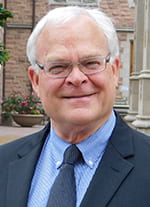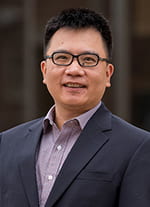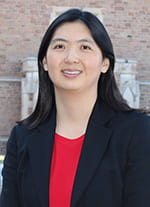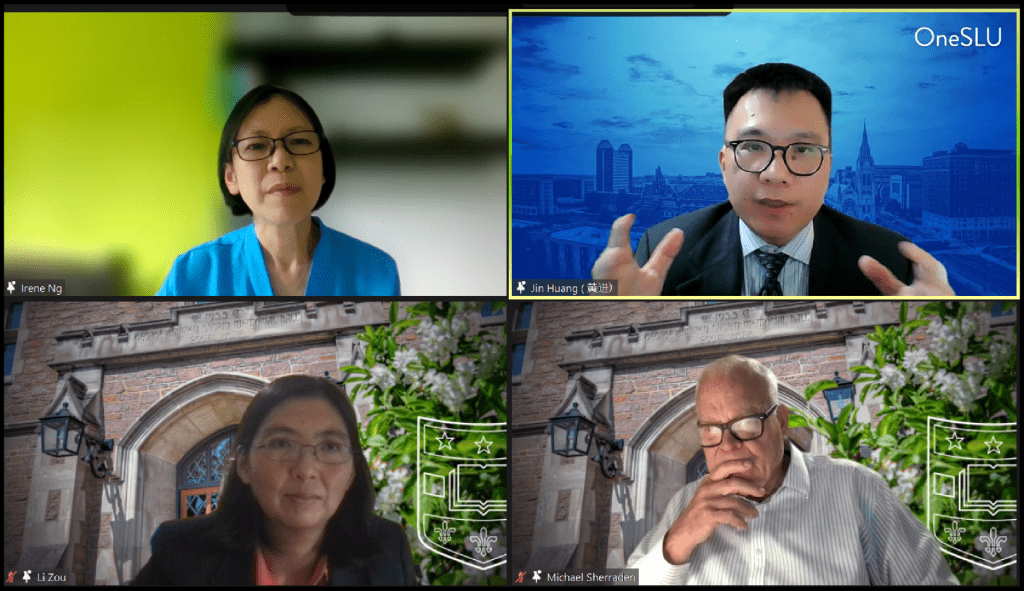In a recent seminar, Center for Social Development (CSD) researchers discussed the SEED for Oklahoma Kids experiment, Singapore’s leadership in asset-based social policy and a vision for global Children Development Accounts.
Singapore is a global leader in asset-based social policy, providing citizens a cradle-to-grave structure for accumulating wealth. That interest in such policies and their broad appeal drew a global audience for a recent event spotlighting evidence from the Center for Social Development’s SEED for Oklahoma Kids (SEED OK) experiment and a vision for global Child Development Account (CDA) policy.
Organized by the Social Service Research Centre at the National University of Singapore, the Next Age Institute at Washington University, and CSD, the virtual seminar featured Director Michael Sherraden, Faculty Director Jin Huang, International Director Li Zou, and Irene Ng, associate professor in the Department of Social Work at National University of Singapore, who moderated the discussion.
“Singapore in many ways is the most interesting example [of asset-based policy] in the world,” said Sherraden, the George Warren Brown Distinguished University Professor at Washington University, co-director of the Next Age Institute at Washington University and founding director of CSD.
The city-state’s structure for enabling citizens to accumulate assets “is really quite distinctive in social policy,” he added. The approach has made Singapore a natural partner for exploring “children’s accounts as a first step toward lifelong asset building.”



“The most interesting example”
Singapore’s relationship with asset-based social policy began in 1955, when British colonial authorities created a mandatory retirement-savings system called the Central Provident Fund (CPF). In 1968, three years after gaining independence, the city-state expanded the CPF’s purpose, allowing citizens to use assets from their accounts as collateral in financing home purchases. Subsequent expansions allowed uses for medical expenses, life insurance and higher education.
In 1993, Singapore launched Edusave, a system of automatic accounts that hold government contributions to defray educational and enrichment expenses for school-aged children. Singapore’s Child Development Accounts, part of the nation’s Baby Bonus policy, followed in 2001 and were subsequently expanded. The government makes automatic contributions into the accounts and matches family deposits. Assets in the CDAs may be used for a variety of purposes related to the child’s development.
A proposal
Sherraden detailed the original proposal for children’s accounts in the 1991 book “Assets and the Poor.” He envisioned a universal policy system that would automatically enroll every child at birth, provide a substantial seed deposit, deliver extra contributions for disadvantaged children, and garner investment returns – all to grow assets for higher education and other developmental priorities.
Sherraden’s proposal has been extensively tested. Through the randomized SEED for Oklahoma Kids experiment, researchers from the Center for Social Development have tracked a sample of youth since birth. The widely published findings show that the accounts confer both financial and nonfinancial benefits.
For example, the experiment showed that, if every Oklahoma child born in 2007 received a CDA at birth, 36,330 of the state’s low-income 14-year-olds would have assets within the state’s 529 college savings plan. In the absence of a CDA policy, only 500 of those children have such assets.
Findings also indicated that children with a CDA have fewer behavior problems and better math skills relative to counterparts in the control group. Among the mothers of children with CDAs, the researchers found better social-emotional functioning, more positive parenting practices, more preparation for the child’s college education.
“These children are now about age 16. In general, they are in the junior year of high school,” said Jin Huang, professor at the Saint Louis University School of Social Work, research professor at Washington University’s Brown School, and faculty director at CSD. “Parents are working on college preparation for their children,” Huang added. “They’re talking to children about their future planning, talking about these kinds of logistical issues of college preparation.”
When Ng, the event’s moderator, asked about the next phase of SEED OK research, Huang said, “Currently, we are in the process of designing the fund distribution,” and the research team plans to examine how the distribution of CDA assets shapes outcomes.
“We hope that we can learn these distribution outcomes very soon. Not just in terms of distribution outcomes for families, but also distribution principles for policy design in the next two years,” Huang said.
Continued growth
Singapore is one of several nations that adapted Sherraden’s proposal. The United Kingdom, Israel, Canada, and South Korea also implemented versions. New initiatives are underway or developing in mainland China, Azerbaijan, and Kazakhstan. In the United States, emerging federal proposals are similar to the CDA policies in seven states.
In the United States alone, Huang said, over 5 million children have assets in CDAs and the number grows with new births every year.
“Over 95 percent of these CDAs are built on the policy model designed and tested in SEED OK. This demonstrates the power of testing a social policy, not just individual behaviors,” Sherraden said.
“Worldwide, CDAs hold assets for over 15 million beneficiaries, including those in the United States,” said CSD International Director Li Zou. Despite this, “many countries lack a structure for asset-based policy.”
That’s where multilateral institutions have roles to play, Zou noted. In addition to strengthening country-level policies, institutions such as the World Bank can facilitate cross-border collaboration, create sustainable financial structures for CDA policy and manage assets in the accounts.
“International aid can be a major source of fund flow to help build assets of the world’s poorest children,” she said. The accounts and the financial structures that enable them “can be viewed as global public goods that can benefit the whole world’s children.”
In Singapore and beyond, the continuing growth of interest in CDA policies signals recognition of their potential to shape the future of education, financial security, and social equity for generations.
As the event drew to a close, Sherraden emphasized the importance of creating a reliable structure for CDA policy.
“We have clean water running into all of our homes because the government created a structure to put the water in the homes,” said Sherraden. “Otherwise, we would be out looking for water every morning, and that just doesn’t make much sense. We think that asset building is a little bit like that. It’s important that assets flow into every home.”
Video from the October 4 seminar is available on Facebook from the Social Service Research Centre at the National University of Singapore: Watch the seminar.
